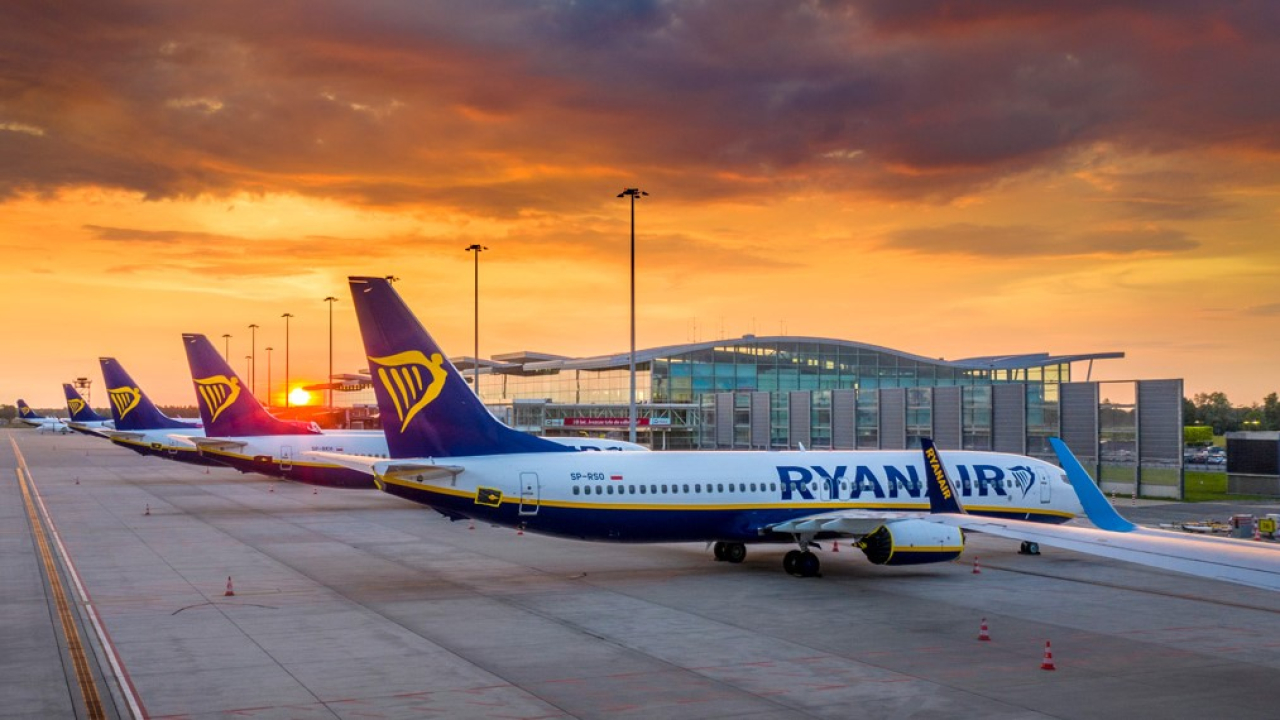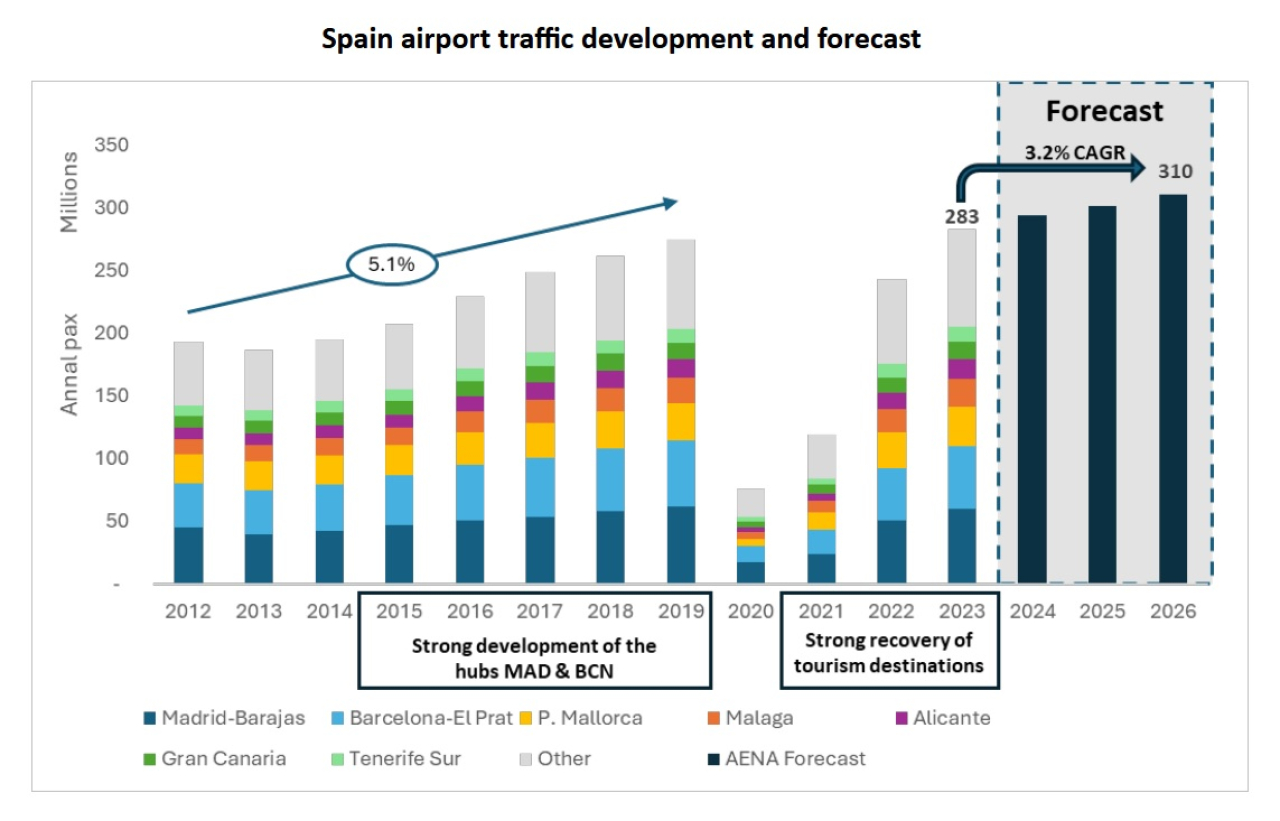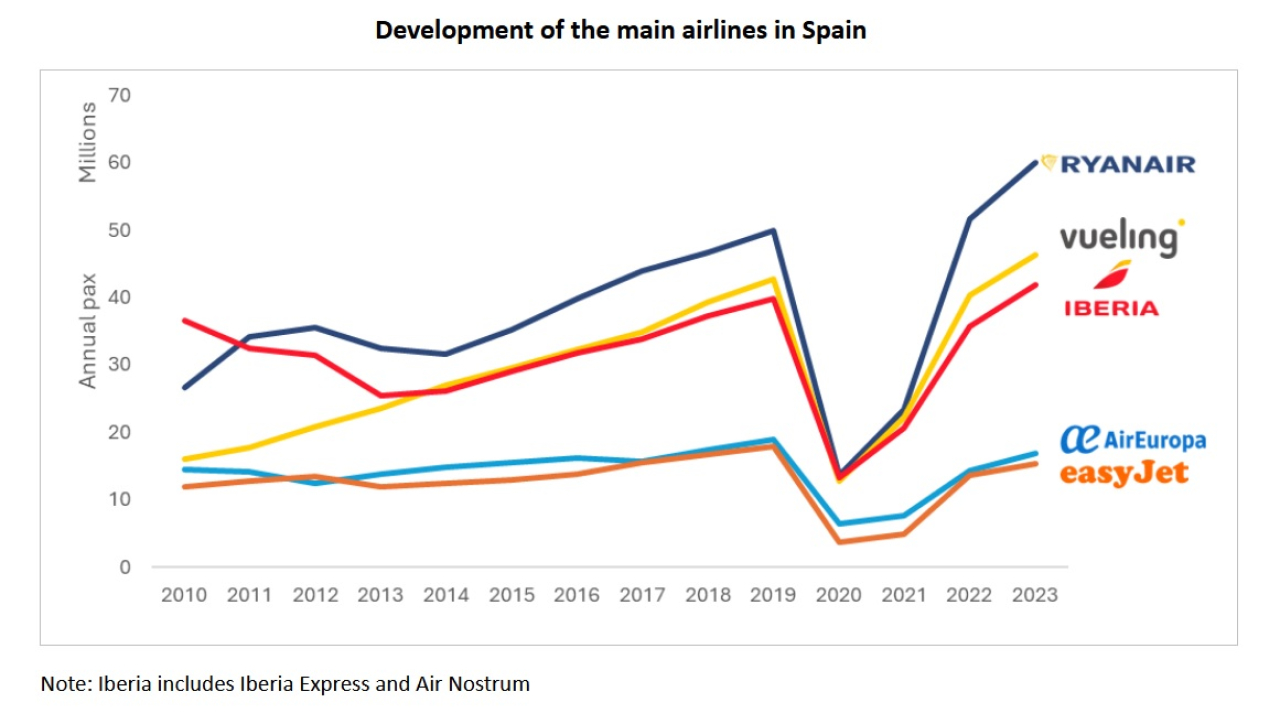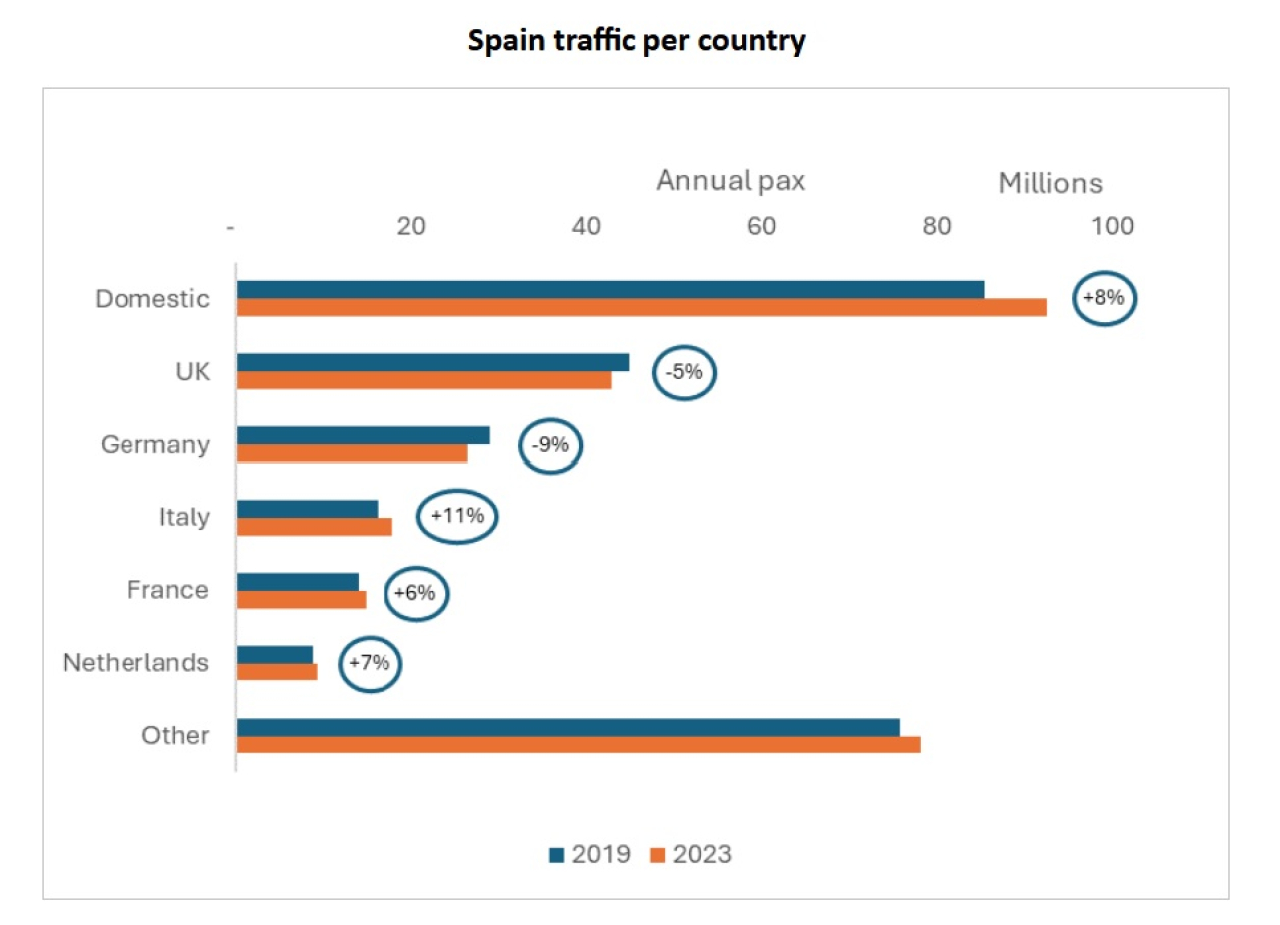Will a 4.1% Hike in Spanish Airport Charges Rattle Ryanair?
Dion Zumbrink
March 20, 2024

© Piotr Mitelski /
Air traffic in Spain has recovered exceptionally well, closing 2023 at 3% above the pre-pandemic 2019 level. Some airports, including Malaga, Valencia, Tenerife, and Ibiza handled over 10% more passengers than in 2019, indicating the tourism industry is the driving force behind the recovery.
Spain’s airport operator Aena has now increased its traffic forecasts, expecting to grow to over 300 million passengers by next year which is a year earlier than it originally forecast in 2022. The airport operator has therefore doubled budgeted investments in the next planning period (2027-2031) versus the current period and major expansion projects across the Spanish airports can be expected.
However, the revised forecast is still at a lower growth rate than the 5.1% achieved between 2012 and 2019 during the development of Ryanair and Vueling in Spain (see chart below).

© Dion Zumbrink
The Role of the Airlines
Fundamental to growth, besides the strong underlying demand for tourism, is the supply of seat capacity by airlines.
In January, both Ryanair and IAG (Iberia and Vueling) presented large investment plans for the coming years with IAG committing €6 billion (US$6.5 billion) over the next five years, and Ryanair €5 billion until 2030. This will substantially boost the tourism industry in the country and support economic growth.
However, later in January, a green light was given to increase airport charges by 4.09% from this month (March). Ryanair is the country´s largest airline and has fiercely opposed the hike.
Ryanair’s plans in the next seven years include adding 33 aircraft based in Spain, five new bases, and growth to 77 million passengers from 60 million in 2023. These plans were presented several weeks before the final go-ahead of the airport charges increase. An official reaction has not yet been given by Ryanair but its CEO Michael O’Leary indicated on an earlier occasion that competitive airport charges would be required for the success of the plan. He added that investment in Spain was based on a freeze in airport charges until 2026 at least.
Since 2011, Ryanair has been the largest airline in the country, carrying every one in five passengers last year reaching an all-time high of 60 million, 20% above 2019. The airline has been fundamental to Aena’s speedy recovery and will remain vital to Spanish aviation in achieving any newly anticipated growth.

© Dion Zumbrink
Spain’s air traffic increases have been driven mainly by domestic travel which is 8% above pre-pandemic levels, as well as that of some European markets such as Italy (+11%), France (+6%), and the Netherlands (+7%). The UK and Germany remain below 2019 volumes.
In the domestic market, Ryanair is a less important player with a 17% share last year, versus 57% by Vueling and Iberia. The support of Ryanair is, however, especially important for Spain’s international connectivity, while IAG’s development has a larger impact on domestic connectivity.

© Dion Zumbrink
Ryanair's Reaction
Ryanair takes delivery of 400 new aircraft in the next decade and has the power to significantly boost the aviation offer of a country, as it has done in Spain. The airline has major expansion plans in Eastern Europe and is currently having a similar debate in Italy where it using the carrot of a potential €8 billion investment to try and eliminate local taxes charged by municipalities.
The airline has obtained a position in European aviation where it has the size and capacity to support the development of a region, and at the same time use that power to influence major policy decisions.
Despite the charges hike in Spain, Ryanair has continued to add new routes and expansions—for the moment. Increased summer schedules were recently announced from Malaga, Alicante, and Mallorca. With a proven strongly performing market like Spain, and large expansion plans of competing airlines within IAG, it seems likely that the airline will choose to maintain its market-leading position rather than execute battle plans.
